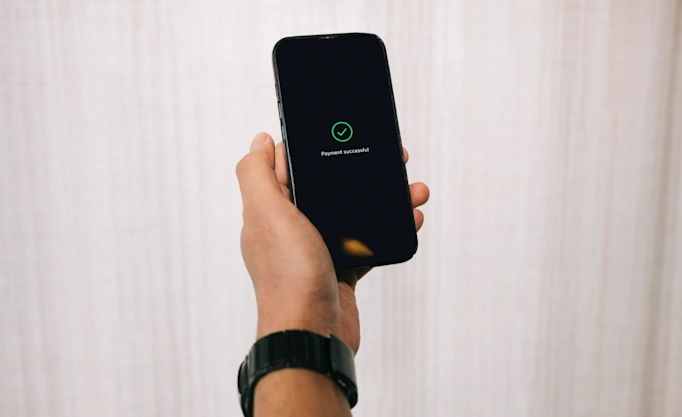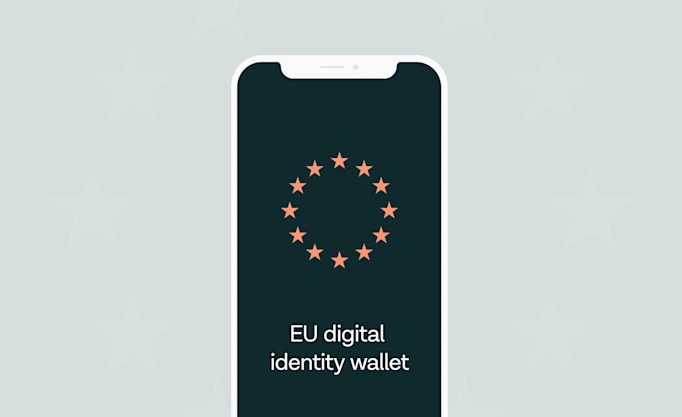How to reduce fraud in loan applications with enhanced risk decisioning

Digitisation of financial services creates user-friendly experiences for applicants, while better positioning lenders to include the underserved. However, a new challenge has emerged – the increased likelihood of loan fraud. Here’s a deep dive into the issue and future-proofed solutions for lending.
Innovation in finance and its increasing importance
The digital transformation of financial services has led to a multitude of new ways for banks and lenders to connect to their customers. Consumers have access to many services with a tap of their phones in a few minutes – and this expectation extends to when they need a line of credit, a credit card, consumer loan, Buy Now Pay Later and many other financial tools. For this reason, companies operating in the financial services industry have focused their operations on providing smoother applications of late.
How fraud looks in the loan applications landscape
However, delivering convenient services has led to another challenge: fraud. Forging payslips and bank statements became increasingly easier with the digital transformation. Research from RentTech platform Goodlord has shown that more than half of all fraudulent tenancy applications involve fake or doctored pay slips.
According to data from UK Finance, loan fraud losses in the UK increased by 40% in 2022. Over £1.2 billion was stolen through fraud in 2022 – within that figure, unauthorised fraud losses were £726.9 million. The banking industry in only England and Wales spends billions of pounds each year fighting fraud, but criminals continue to commit this crime and losses exceeded £1 billion for another year running. That is equivalent to around £2,300 stolen every minute of last year. In all its forms, fraud accounts for over 40 percent of crimes committed in England and Wales.
Common fraud techniques
Identity theft, synthetic identities and falsified financial information are common fraud techniques in loan applications. If we dive into categories of fraud, first and third-party fraud are the common categories for consumer loans. First-party fraud, as we explained above, is where someone falsifies their own information. It could be that they inflate their income, fake their employment, or fabricate their financial situation to obtain services like a loan.
In third-party fraud, a person's identity or personal details are used without their consent or knowledge. Fraudsters can also fabricate identities by using stolen and false information to create false identities.
The financial and reputational consequences of fraud
Both first and third-party fraud have financial and reputational consequences for lenders and borrowers. First-party fraud has high potential to increase the amount of non-performing loans since the profile used to approve the loan is not accurate. This can significantly impact lenders’ profitability and hinder their ability to grant new loans.
Third-party fraud on the other hand affects the reputation of the lender – on top of a non-performing loan’s financial burden. The victims of fraudulent acts would very likely attribute the negative experience to the lender. And when trust, the foundation of the finance industry, is broken it is very difficult to gain a competitive edge again.
Enriched data – safeguarding against fraud in the digital age
Verifying affordability data is essential in the application process for loans, tenancies, and more. However, today's tools can be easily manipulated for fraud, such as forging or stealing IDs and payslips. Open banking, on the other hand, plays a significant role in helping lenders decrease fraud.
Romain Mazoué, Chief Risk Officer at Younited, a European market-leading credit provider based in France, says that open banking has been a “real game changer” for the company's loan granting process in terms of fraud prevention.
"With open banking, we have been able to reduce fraud by a factor of 15 in instalment payments and by a factor of 10 in consumer loans."
– Romain Mazoué, Chief Risk Officer at Younited
With new data enrichment and categorisation capabilities, income verification can finally catch up to the digital age and safeguard banks and lenders against fraud. Tink’s Income Check product allows banks and lenders to instantly verify a person’s income with secure, real-time data directly from their bank account. With the help of pattern recognition, incoming transactions can be grouped and filtered by recurrence and other criteria to extract only the ones that constitute income streams.
First and third-party fraud dropped by up to 70% for customers validating income through Tink Income Check rather than payslips because Strong Customer Authentication (SCA) is the basis of verification for open banking transactions.
SCA – what it is and how it adds an extra level of security
SCA is a regulatory requirement aimed to increase the security of electronic payment services in the EU and the UK. In practical terms, SCA really boils down to multi-factor authentication (MFA), sometimes also referred to as two-factor authentication (2FA). That is, using at least two out of three possible forms of identification:
Knowledge: something you know, such as a password or PIN
Possession: something you own, such as a mobile phone or other device
Inherence: something you are, usually an individual, biometric characteristic such as a fingerprint or facial recognition.
“As a lender, we face two main types of fraud. The first is identity theft. Strong customer authentication has greatly reduced the number of fraud attempts in this category. The second type of fraud is counterfeit, forged, or fake documents. Open banking has completely eliminated this type of fraud on income statements, which used to represent about 80% of the document fraud attempts we have seen,” says Younited’s Romain Mazoué.
Tink’s fully managed authentication solution, Tink Link, lets the lender take care of end-user authentication flows. It’s also optimised to provide users with a very intuitive authentication flow – improving security without standing in the way of a payment.
On top of verifying the income of an applicant, open banking simplifies the application process with pre-filled fields, e.g. account details for receiving funds, the applicant’s full name and many more. Rather than demanding sensitive information via manual input, you’re essentially verifying the information instead – killing two birds with one stone.
The transactions and account data gathered with connectivity have plenty of potential to determine suspicious transactions, when combined with the right model. They can also indicate whether the account shared with the lender is indeed the applicant’s daily bank account, or some other account being used to obscure their true financial health.
With open banking and data engineering, Tink's Risk Insights product gives an overview that includes potentially risky patterns – such as gambling, or when users appear to have a hard time making ends meet, often ending up in overdraft. Details of account history and stability, as well as other risky behaviour like ATM withdrawals are traceable with this product. To conclude, Tink Risk Insights is a sound fit for complementing a risk analysis based on statistics and patterns in a customer’s historical transactions.
Risk decisioning – combating high dropoffs and outdated data
Credit decisioning with real-time financial data is faster and more convenient than traditional loan origination processes. It’s digital and user friendly, offering consumers a fast, simple experience. From a lender perspective, there are many benefits to implementing verified financial insights in the loan origination process in addition to reducing risk of fraud significantly. These benefits include:
Higher conversion rates
It's no surprise that convenient user journeys with automation in focus tend to convert more – and help boost customer satisfaction. Data from Tink’s lending partners indicates that offering an optimised onboarding experience based on verified transactions boosts conversion rates by as much as 50%.
More nuanced risk decisioning
With open banking you can assess financial data from a longer time period (up to 12 months). This provides a more nuanced and representative picture of the applicant’s finances.
Improved Gini coefficient
The Gini coefficient helps assess a model’s effectiveness in differentiating between ‘bad’ borrowers, who will default in the future, and ‘good’ borrowers, who won't default in the future. Tink Risk Insights provides a proven set of risk features that have been engineered based on real customer default data thus carrying proven predictive power that can be added to your credit scoring models. Improving models of the probability of default has resulted in multiple Gini uplifts for our customers.
A more streamlined customer experience
Rather than bogging down customers in cumbersome fraud reduction tools, lenders can keep things simple. Tink Link is quick and easy – breaking down barriers in lending. In other words, rather than customers importing their payslips or bank statements manually, or even going into a branch or calling a helpline to prove that they are who they say they are or their source of funds, they’re all authenticated in a few taps.
More inclusive and personalised offers for consumers
Since financial services entered the digital era, finding the optimal user experience has been the greatest challenge. On the other hand, providing simpler and safer user journeys for consumers is arguably a hygiene factor, as it’s one of the responsibilities of financial institutions. From a consumer point of view, additional benefits of implementing open banking in lending are:
A more inclusive lending landscape
As well as providing credit-seeking consumers with a more convenient user experience, open banking also helps promote financial inclusion in the lending industry. With traditional loan origination processes, many creditworthy applicants are excluded from getting a loan when they need one since their solvency may not be immediately apparent.
Faster time to money
With simplified loan application processes and reduced paperwork, loan applicants can connect their bank accounts easily, receiving an instant and thorough assessment of their current level of income – with just a few taps of a screen.
Tailor-made loan terms
Accurate affordability assessments make it possible to provide improved loan terms and interest rates to applicants. For instance, with Tink Expense Check, lenders can analyse how a loan will fit into the consumer’s budget.
Looking for ways to take on the challenge of fraud in lending? Read more about how verifying financial insight helps your business, discover our Risk Decisioning feature or get in touch with our team.
__
Case studies, statistics, research and recommendations are provided “AS IS” and intended for informational purposes only and should not be relied upon for operational, marketing, legal, technical, tax, financial or other advice. Visa Inc. does not make any warranty or representation as to the completeness or accuracy of the Information within this document, nor assume any liability or responsibility that may result from reliance on such Information. The Information contained herein is not intended as legal advice, and readers are encouraged to seek the advice of a competent legal professional where such advice is required.
More in Open banking

2025-06-09
11 min read
The case for “Pay by Bank” as a global term
Thomas Gmelch argues that "Pay by Bank" should be adopted as a standard term for open banking-powered account-to-account payments to reduce confusion, build trust, and boost adoption across the industry.
Read more

2025-06-02
3 min read
Tink joins Visa A2A – what it means for Pay by Bank and VRP
Visa A2A brings an enhanced framework to Pay by Bank and variable recurring payments (VRP) in the UK, and Tink is excited to be one of the first members of this new solution.
Read more

2024-11-19
12 min read
From authentication to authorisation: Navigating the changes with eIDAS 2.0
Discover how the eIDAS 2.0 regulation is set to transform digital identity and payment processes across the EU, promising seamless authentication, enhanced security, and a future where forgotten passwords and cumbersome paperwork are a thing of the past.
Read more
Get started with Tink
Contact our team to learn more about what we can help you build – or create an account to get started right away.
